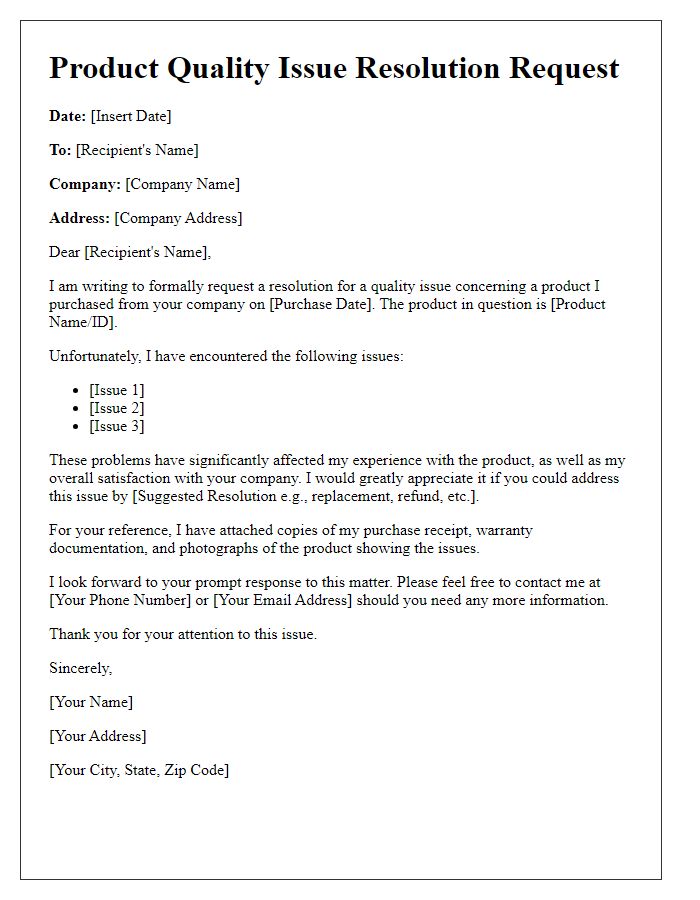Have you ever received a product only to find it damaged or not as described? It's an all-too-common scenario that can leave you feeling frustrated and unsure of how to voice your concerns. Fortunately, writing a complaint letter is a straightforward way to address the issue and seek a resolution. So, let's dive into some effective strategies for crafting your letter to ensure your complaint is heard and resolvedâread on for more!

Clear and Concise Subject Line
Damaged products can significantly impact customer satisfaction and brand trust. When a product arrives in damaged condition, it often leads to disappointment and frustration for the consumer. Such instances may involve fragile items like electronics (e.g., a shattered smartphone screen) or household goods (e.g., a broken glass vase). Clear communication is essential when addressing this issue, as details such as order numbers, delivery dates, and photographic evidence of the damage can aid in an efficient resolution process. Customers typically expect prompt responses and appropriate compensation, reflecting the importance of maintaining strong customer service in retail environments.
Detailed Description of the Damage
A damaged product can significantly hinder its functionality and usability, leading to customer dissatisfaction. For instance, a smartphone with a cracked screen not only presents aesthetic issues but also impacts touch sensitivity, as users may struggle with unresponsive areas. Internal damage to components like the battery or motherboard can pose safety risks, such as overheating or short-circuiting. Furthermore, aesthetic damages, like scratches or dents, can diminish the product's value, affecting resale potential. In appliances, substantial damage such as dents or broken parts may impede performance, disrupting daily life. Addressing these concerns promptly is crucial for maintaining customer trust and satisfaction.
Order and Product Information
When a product is received in a damaged condition, swift action is necessary to address the issue effectively. Order details, such as order number #123456 (purchase date: September 15, 2023) along with product information, including the specific item (Samsung Galaxy S21, model number SM-G991U), need to be clearly presented. Damage descriptions must specify the extent of impairment, whether it involves a cracked screen, malfunctioning battery, or missing components. Proper documentation, such as photographs of the damaged item and packing materials, can support the complaint process. Ensuring all relevant information is included facilitates a timely and smooth resolution from customer service teams.
Desired Resolution or Compensation
When consumers encounter issues with damaged products, they often seek resolutions or compensations to rectify their dissatisfaction. Common resolutions include full or partial refunds based on the product's value, which can range from $10 to $1,000 depending on the item's specifications. Alternatively, consumers might request exchanges for undamaged items, allowing them to receive a product that meets their expectations. Additional compensatory offers might include gift cards or discounts for future purchases, typically valued between 5% to 25% of the original purchase price. Retailers often process these complaints through customer service hotlines or email correspondences, ensuring that consumers feel valued while maintaining brand loyalty. The specific steps to seek resolution can vary between industries, with some requiring photographs of the damaged item or proof of purchase to expedite the claims process.
Contact Information for Follow-up
When addressing complaints regarding damaged products, clear communication is crucial. Including specific contact information fosters responsiveness and resolution. Essential details include customer service phone numbers, email addresses, and physical addresses for correspondence. Including order numbers and purchase dates can streamline the process. For instance, a customer might provide a mobile number such as (123) 456-7890 and an email like contact@company.com, facilitating direct follow-up. Additionally, including the location of the purchase, whether a retail outlet like Walmart or an online platform such as Amazon, ensures the complaint is directed to the right department. Providing this comprehensive information enhances the likelihood of a timely and effective resolution.













Comments